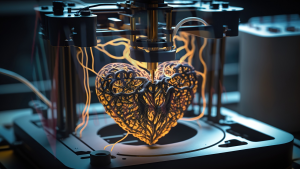Painter Fresno CA applies paint and other decorative finishes to surfaces. This includes walls, furniture, and other interior or exterior surfaces. Painters may also prepare and clean equipment.
Some painters work in art institutions or as artists-in-residence. Others are hired for commissioned painting projects. They can also work from home or in a studio.

Painting is one of the oldest forms of visual art. It is a medium for the expression of ideas and emotions through color, shape, line and texture. The medium is usually oil paints but other types of paints may be used. The paint is brushed onto the surface of a prepared canvas or piece of wood. The surface is then coated with varnish to protect the work.
There are many different styles of painting, ranging from realism to abstract and impressionism. Each style has its own technique and tools. In the beginning, it is common to draw a rough outline of the composition before starting to paint. This helps to ensure that the important shapes of the composition will be placed where they should be. It is also helpful to determine the colors and their placement before starting.
The painter must be skilled in using the materials of the painting as well as observing and interpreting what they are seeing on the canvas. It is also necessary to be able to communicate to the viewer what they are seeing by creating depth, movement and light.
Depending on the cultural tradition of the artist, the subject matter of a painting can vary. Early paintings were often created for ritualistic or decorative purposes and therefore reflected the beliefs and practices of the people that viewed them. Later, painters became more creative and began to use their works as an outlet for emotion.
One of the most challenging aspects of painting is developing a consistent style. This requires a lot of practice and experimentation. The best way to become a more consistent painter is to focus on the fundamentals of composition, value, and color. This will help you achieve a higher level of skill more quickly.
The process of painting can be very meditative and can also provide a release for feelings that may be too difficult to express verbally. Many therapists recommend that their patients take up painting or drawing as a form of emotional expression.
Painting is an activity that allows homeowners to personalize their living spaces. Interior painting can create a calming environment for relaxation, or vibrant colors can energize a space. Exterior painting can be an opportunity to keep up with design trends and make a home look newer and more appealing to potential buyers.
Decorating
A painter is someone who applies paint, wallpaper and other decorative finishes to walls, ceilings, wood trim, doors, windows and furniture. They may also perform related tasks, such as sanding and priming surfaces, filling cracks in walls and ceilings and repairing damaged trim. Many people enter this career with no formal education but are able to learn through on the job training. Others take a short course at a local college to improve their skills and knowledge.
When hiring a painter, you should check their credentials and experience before making a decision. You can also check their online reviews to see what other customers have to say about them. You should also ask for a quote before the work begins so that you know how much it will cost.
Painters should be able to provide you with an estimate of both direct and indirect costs. The direct costs are the labor and materials used for the project, while the indirect costs are the monthly payments on equipment and work trucks, overhead and the salaries of support staff. Indirect costs are often overlooked by customers and can add up quickly.
Professional painters and decorators will likely have their own team of workers so they can keep working quickly to complete the project on time. This can save you a lot of stress and inconvenience, as it means you don’t have to deal with the mess and disruption yourself.
Painting and decorating is a complex process, so it’s important to hire a professional for the job. They will be able to give you advice on what type of paint and finishes are best for your home, and they can answer any other questions you might have. They will also be able to give you an accurate timeline for how long the work will take, so you can plan accordingly.
Before starting any work, a painter should walk through the site and take measurements. They should also discuss the desired outcome with the client, including any special requests or restrictions. During the walk-through, the painter should also talk about any safety concerns that need to be addressed. This is an important step to ensure that the job is done safely and correctly.
Interior Design
Interior design is more than just making your house look pretty, it’s about creating a functional space that fits your needs. It involves careful planning, choosing the right materials, and designing the perfect lighting. It’s also about being eco-friendly, following the rules, and staying up to date with the latest trends in the industry.
If you’re interested in becoming an interior designer, it’s important to know how this profession works. The best way to do this is to start by getting professional training. This will help you understand how to approach a project from a global and more conceptual point of view. Once you’ve completed your training, you can start applying your skills to real-world projects.
One of the most important parts of interior design is finding a focal point. This can be done by highlighting a piece of furniture, accentuating certain colors, or adding contrast to an area. This focal point will help draw attention and create a sense of balance and harmony in the room.
Interior designers are highly skilled professionals who are able to create environments that are both functional and aesthetically pleasing. They are knowledgeable about a variety of topics, including building codes, construction documents, occupancy loads, healthcare regulations, and sustainable design principles. They also have the ability to effectively manage and coordinate the work of other professionals involved in the construction process. This includes coordinating with architects, engineers, and contractors. They can also advise clients on the selection of fabrics, paints, wall coverings, furniture, and other interior finishes.
Exterior Design
The exterior design of a home is important because it creates a first impression and influences people’s perception of the property. It also adds value to the house and increases its marketability. However, it’s a challenging process that requires the help of professional designers. Unlike interior design, exterior design includes the entire property, including outdoor spaces. It also focuses on the roof, siding, and other architectural features. Its purpose is to make the property look aesthetically pleasing and well-maintained.
The first step of the exterior design process is defining the type of structure and establishing the style. Then, the designer will select materials and colors. They will consider the climate, surrounding buildings and trees, and any landscape requirements. They will also determine the building’s footprint and the placement of windows, doors, and other features. They will use 3D renderings to visualize the final result.
Colors are an essential part of any home’s exterior. They communicate a message about the owner’s personality and lifestyle. They can be used to convey a rustic, earthy feel, a modern and minimalist aesthetic, or any other desired style. They should also be able to stand the test of time and withstand the elements. The color palette should be chosen carefully so that the colors complement each other and draw attention to the architectural features of the home.
In addition to color, the exterior design process focuses on materials and finishes. For example, wood accents can be incorporated to match the architectural style of the house. These details aren’t just decorative, but they can also increase a building’s energy efficiency and durability. They can also reduce water runoff and protect against the elements.
Choosing the right materials is critical to the success of any exterior design. The best materials will complement the architecture of the home and blend in with the surrounding environment. They will also be durable and easy to maintain. For example, a wooden facade can be paired with metal windows for a sleek and stylish look.
Exterior designers are a unique group of design professionals who combine skills from several disciplines, such as landscape architecture, construction, and interior design. They are a small group that is hard to find, but they can add value to a home and increase its marketability.
